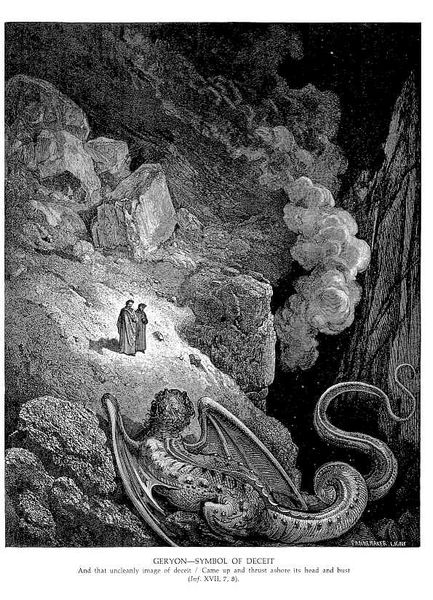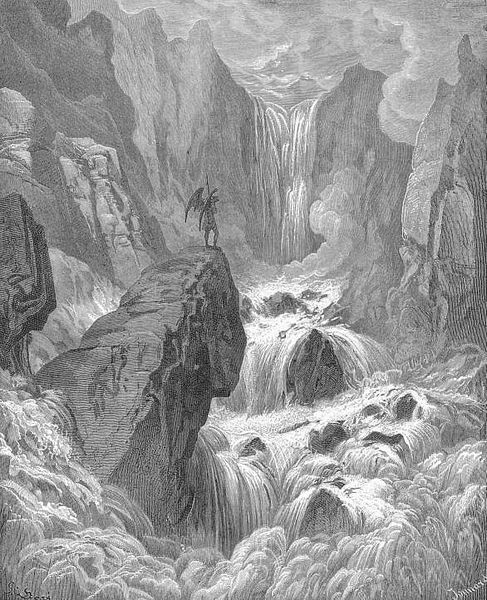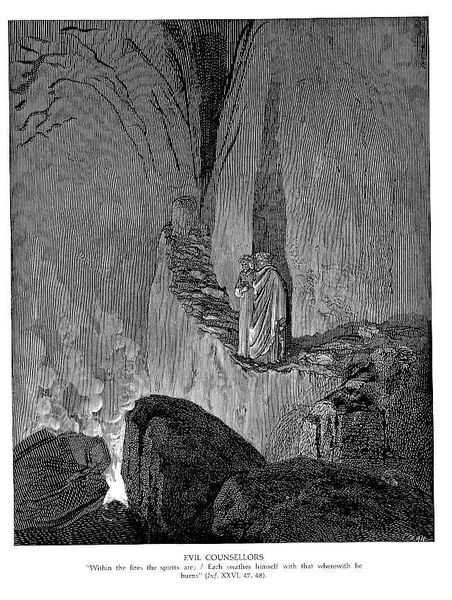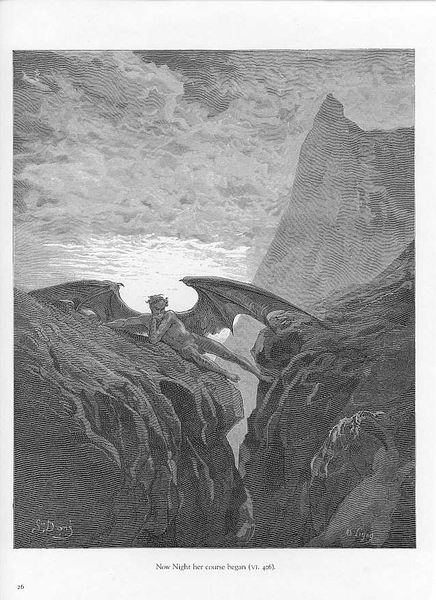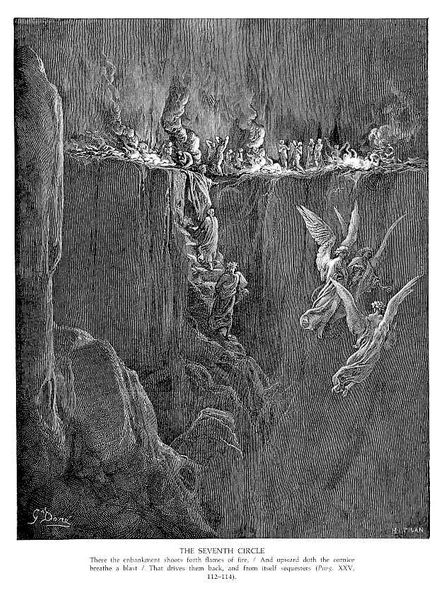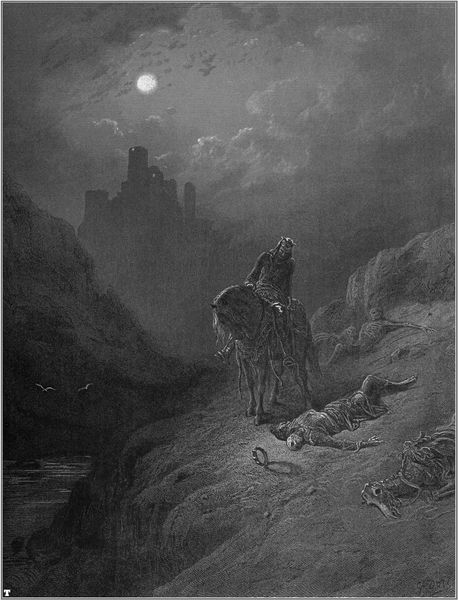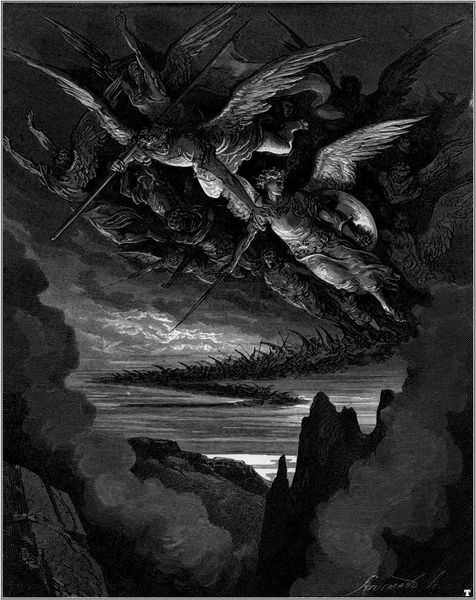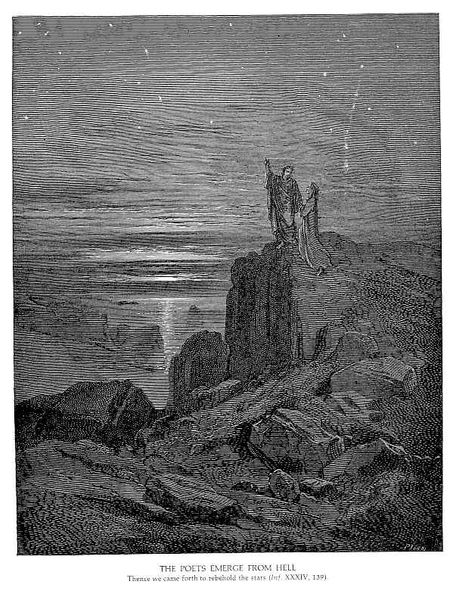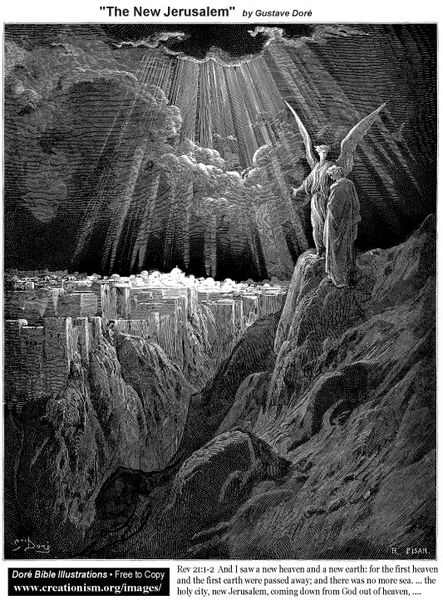
drawing, photography, engraving
#
drawing
#
narrative-art
#
landscape
#
figuration
#
photography
#
rock
#
romanticism
#
black and white
#
engraving
#
monochrome
Copyright: Public domain
Editor: So, this is Gustave Dore's "The Lustful." It's a monochrome drawing, I'm guessing an engraving. The swirling mass of figures creates such a sense of chaos and suffering, set against this very craggy landscape. How do you interpret this work, especially given the title? Curator: Dore situates "The Lustful" within a specific narrative: Dante’s *Inferno*. This context is key. The whirlwind represents the eternal punishment of those overcome by lust. Dore uses the landscape to highlight the soul’s isolation and the torment arising from their inability to control their passions. But what does 'lust' mean within a 19th-century European framework, and how might that differ from today? Editor: It makes me think about societal expectations. Were there double standards regarding male versus female sexuality? Curator: Absolutely. Dore’s work participates in a long history of representing female sexuality as inherently dangerous or tempting. We can unpack how this artwork reflects and perpetuates those patriarchal norms. Notice how the figures in the whirlwind seem mostly female, furthering this association. Consider how the use of stark contrast might also contribute to the dramatic, almost moralistic tone. Is there an element of judgment being passed, not just observation? Editor: I hadn't really thought about it like that. I was focused on the overall drama, but seeing it as a commentary on societal views of sexuality is really eye-opening. Curator: Exactly. Art isn’t created in a vacuum. Examining these pieces critically can tell us a lot about shifting cultural values, the power dynamics at play, and the way they've shaped—and continue to shape—our understanding of each other. Editor: This really gives me a lot to think about regarding not just the artistry, but the embedded messaging, which is way more intricate than I first realized!
Comments
No comments
Be the first to comment and join the conversation on the ultimate creative platform.
